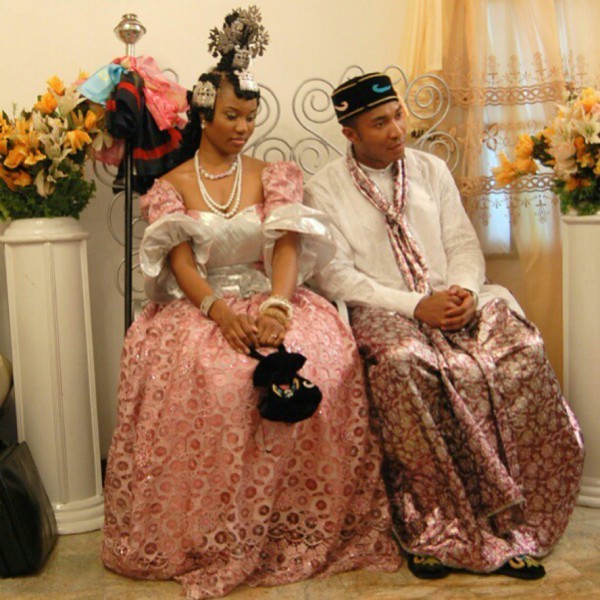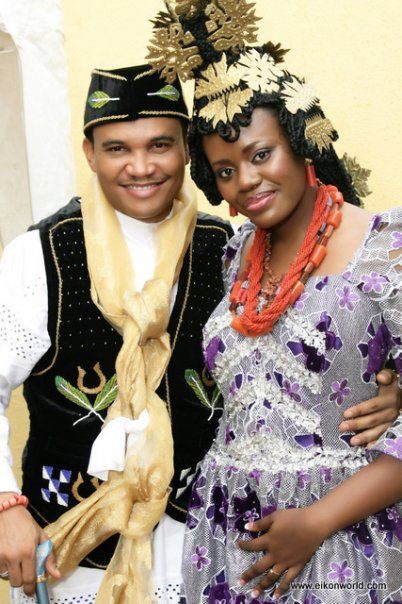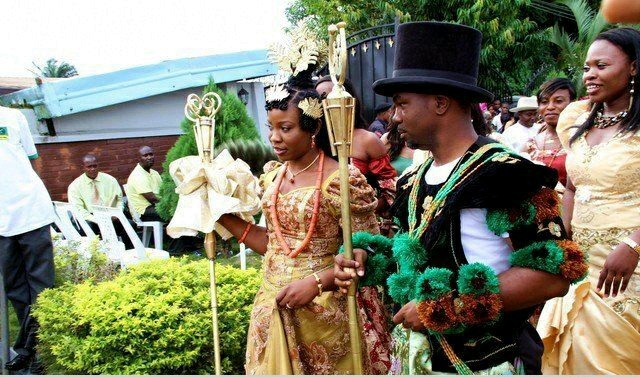
Betrothal
With modernization sweeping through the country, arranged marriages between young couples may seem unusual, however, it is a practice that still runs among the Ibibios. In ancient times, betrothals before the age of 14 were common but with the adoption of western culture, people are at liberty to marry whoever they chose.
One of the most ancient of all the ethnic groups in the country, the Ibibio’s are a fashionable tribe largely situated in Akwa Ibom state.
While "Ibio-ibio" literally means “short” or “brief”, they are considered the fourth largest ethnic group in Nigeria and are greatly admired around the country for their flamboyant and joie-de-vivre culture, norms and traditions. In that regard, their colorful and captivating marriage rituals – a fascinating step by step processes which includes an elaborate wedding ceremony, also casts a reflection on their ancient customs, showcasing a rich heritage of superstition and delightful extravagance.
Sugar Weddings & Parties is here to enlighten you about the Ibibio’s marriage rites and customs.

Ndidiong Ufok
The above Ibibio phrase literally means: “to know the house”.
This is the first step in the marriage process of the Ibibios and other cultures such as those in neighbouring Imo State refer to this stage as ‘Introduction’ or ‘Locating the in-laws’. This takes place after a man and woman have reached a mutual agreement to join themselves in marriage, either as a result of a betrothal or by choice, the man then proceeds on a visit to the woman’s home to formally inform her parents of his intention, get approval and make inquiries on further arrangements and procedures.
Usually, the man embarks on the visit with 3 or 4 other men and a bottle of wine. At the end of this stage, the father of the woman either accepts the man or rejects him. If the groom is accepted, both parties agree on a date for a second meeting.

Nkong Udok/Nkong Usong
Translated as ‘knocking of the door’, Nkong Udok/Nkong Usong is the next step in the marriage process. This is the stage where the formal declaration of intentions, where the man visits the woman’s home again to officially ask for the lady’s hand and collect the marriage list.
This stage is common among different Nigerian traditions including the Yoruba and the Ibo, however, with the Ibibios, the groom is expected to arrive with some relatives from his family, including an elderly man or preferably, the patriarch of his clan and some alcoholic drinks. At the end of this stage, the family of the bride and groom get to meet and familiarize themselves with each other, the bride price is also negotiated and the marriage list is drawn up and given to the groom.
The date of the delivery of the items is usually settled as well as the date for the traditional wedding proper. The list usually contains items to be given just to the immediate members of the bride’s family, but also her grandparents both paternal and maternal, the village women and the village youth.
Uno mkpo
Uno Mkpo which means to “to give something” is the day that the items given to the prospective groom is delivered. This act is very important as traditionally, it solidifies the prospective groom’s commitment to his request for marriage and it serves as a form of compensation to the family of the prospective bride for taking away a member of their family.

Usoro Ndo
This is the most important stage as it is the traditional marriage ceremony. Upon arrival, the women and children of the village fence the entrance with wedges and make their requests to the groom, and it is the duty of the groom and his family to meet their request on the spot.
The ceremony kicks off with an opulent display of food – Edi kang ikong, Atama,Edi tan, Ekpan nku kwo and music. The aim is to assure the groom and his entourage that the prospective bride had impressive cooking skills and would not slack in feeding her husband. After enjoying the meals, the groom and his family is ushered into the main venue and the bride who is garbed in full traditional attire, dances in with maidens on her trail.
The bride makes as much as 3 trips into the venue. In one of the trips, she has to search for her groom. The last part of the marriage is the nuptial dance which marks the end of the ceremony and regarded as the first official activity the couple engages in as a couple. The bride is expected to follow the husband home after this, but in recent times, the couple usually proceeds to perform the church wedding before the marriage is consummated
